Today - $60.00 Off And One Free Pound Of Our Special
Soup Bean Mix!
Why Heirloom Soup Beans Could Be The World's Healthiest
"Storable" Survival Food!

Forgotten and Embarrassingly "Simple To Use" Survival Super-Food Now Available For Pennies on The Dollar!
Best Part: These Premium Quality Heirloom Soup Beans Are Hand-Packed By Our Family
Dear Friend,
If you've ever looked at buying a supply of emergency food, you know the stark reality:
Emergency food storage is always about trade-offs.
You sacrifice the rich taste, flavor, and nutrient density of whole foods for the practicality of more long-term, shelf-stable foods.
Until now, that is.
I want to tell you about an impressive, but forgotten whole food that's perfect for emergency food storage. It's nature's ultimate high protein super food... practically bursting not only with precious protein, but also vitamins, minerals, fiber, and other necessary survival nutrients.
I'm talking about certain types of dried beans. Not only are they a must-have survival food, but they're also a major money-stretcher when budgets are lean. To my knowledge, there is no natural food on the planet that delivers so much nutrition for so little cost.
Here's what I mean:
Heirloom beans are also rich in nutrients that play key roles in immune function. For example, heirloom beans contain bio-available zinc as well as quercetin which is a zinc ionophore. Ionophores such as quercetin are specialized “transport systems” that carry zinc across the cell membrane where it plays an important role in viral repression.
Heirloom beans are also rich in bio-available calcium, vitamin K, manganese, vitamin c and fiber to name just a few nutritional benefits.
But first things first. You simply can't ignore the flavor of the heirloom varieties. It's another story altogether. For most Americans, dried beans from the grocery store are horribly bland and boring. And, unfortunately, many people never learn to like beans at all because they've never tasted fresh heirloom beans. That's what happens when you're forced to settle.
This Is Your Ultimate Soup Bean Survival Kit!
Despite the existence of over 15,000 bean varieties in the world today, only a handful of them ever make it to your local grocery store.

Big-Ag "grocery store beans" are often stored for years before they are packaged for retail sales.
The dried beans you buy at the grocery store sit around in storage silos for at least four years before they make it to the store shelves.
And chances are, those “Big-Ag” beans are the ones you’ve tasted and hated. That’s because the vast majority of beans that really taste great aren’t suited for the brute-force, industrialized farm-to-market techniques large commercial farmers use today.
What you’re left with, commercially, are a handful of “Pesticide-Herbicide Ready” varieties that can handle the harsh treatment that passes for farming today. They may make it to market cheaply enough… but they taste like paper when they get there!
Why Almost Everyone Is Wrong About Dried Heirloom Beans As The Ultimate Survival Food!
But it’s time to forget everything you’ve ever heard about beans as a tool for self-reliance. This is a story almost no one knows about. In fact, you’ve probably never really tasted beans, at least not the way God intended beans to taste anyway.
So what’s the down and dirty of all of this? It’s this: I think we’re onto something. I think this is the greatest self-reliance story ever told. Here’s why:
My name is Bill Heid, and my company, Powerful Living, sells products that help people to get off-the-grid and become more self-reliant. For quite some time now, we’ve been wanting to offer our customers a nice selection of dried heirloom beans. For us, selling heirloom beans is a no-brainer… except for one thing:
The dried beans that you can get in most grocery stores are, in my humble opinion, something to be avoided if possible for the reasons previously mentioned.

For People With Food Intolerance Issues, Heirloom Beans may actually be a better alternative!
So, if we were going to sell dried heirloom beans for soups, I wanted them to be the absolute best beans in the world. And, not only did I want the absolute freshest beans available (because of the shelf life issues) but they also would have to be...
They Would Have To Be The Best Tasting Beans In The World Today. Period.
And after quite a search by our international seed buyer, we finally found what we think are perfect heirloom beans. We’ve stocked up on some of these beans for ourselves and now we’re offering this remarkable bean stock to our friends and customers in a very special package we’re calling “Soup Bean Survival Kit.”
Here’s the story: We found these rare heirloom beans on a farm in California’s Sacramento Valley, grown by a farmer whom we’ve fondly nicknamed “The Bean Doctor.”
The Bean Doctor is not a traditional farmer. He’s a little quirky, a little secretive and he only grows rare heirloom beans, with rich cultural histories going back hundreds of years. I’ve never seen a grower whose “heart is in it” like this guy. He isn’t just a farmer, he’s also a historian, anthropologist, and explorer all rolled into one. (Show him a bean he’s never seen before, and he’s as excited as if he won the Powerball lottery.)
The Bean Doctor has also, single-handedly, saved a number of heirloom bean varieties from the brink of obscurity. Some of these beans are so rare that he’s had to pay a fortune for just a handful of beans for seed stock. But he’s such a plant genius and once he gets a few of the rare seeds in the ground, the rest is almost magical. In a few seasons of careful stewardship, he can literally bring a rare or obscure variety of bean back to life.
But it’s not their near-extinction status that make these beans so valuable. And it’s not their astonishing nutrient-density. It’s not even their striking beauty as each variety has its own colorful, distinctive markings. Nope, none of those things make these beans so sought after, so valuable. What is it then?
And Why The Heck Are Five-Star Chefs From All Over The United States Lining Up And Almost Begging For Heirloom Beans?
The answer lies in their extraordinary flavor.
From a culinary perspective, the heirloom beans we’ve put together in the new Soup Bean Survival kit are truly exceptional. In fact, I don’t believe you will find any beans on the planet with better taste!
And that’s not all. Each variety in the package has its own distinctive flavor and texture. Creamy… meaty… buttery… hearty… delicate… each one is different from the last. The Calypso bean, for example, is as different from the Green Flageolet bean as a Barnett Vineyards Cabernet Savignon is from a Babcock Winery Pinot Grigio.
Any chef worth his salt knows that truly outstanding food is all about the quality of the ingredients. And that’s why the distinctive flavor and texture profiles of these heirloom beans are so highly prized by chefs and gourmands almost everywhere on earth.
More and more, gourmet chefs hound heirloom bean growers (and especially our friend Dr. Bean) to plant more of these rare varieties. They leave no stone un-turned to find supplies of them. And when they discover a cache of them, they keep the source close to their chests – because they don’t want to have to share their “hidden treasure” with anyone. In fact, these big-time chefs love these beans so much that sometimes they’ll buy out entire inventories
leaving nothing for ordinary folks.

Until now, rare heirloom beans have only been available to top chefs.
These “Premium Quality” Heirloom Beans Are Simply Not Available To The Public Unless You Know Someone Well Connected In The Bean World
And of course you can forget about ever finding beans like this in local grocery stores. These heirloom beans require far too much coddling to make them profitable for the giant food conglomerates that control most of the country’s food production.
And because heirloom beans are native to the Americas, they surpass non-native crops when it comes to the uptake of minerals and other soil nutrients. That’s what we think makes them so flavorful and nutrient-dense. They’re also better at resisting native climate stresses, pests, and diseases, and are more sustainable in the long run.
The Bean Doctor is always on the lookout for old, forgotten strains. When he finds a likely candidate, he takes it back to his farm and grows some for himself. At any given season, he’s growing 40 or 50 different heirloom bean varieties. (As far as we know, he’s the only farmer in the world who does anything like this.)
The Best Beans Have To Be Grown In The Perfect Climate!

You need a great "micro-climate to grow premium heirloom beans.
The micro-climate provides the beans with the exact temperatures, moisture levels, and drying winds they need for each stage of growth, resulting in the perfect taste and texture.
The Bean Doctor’s farm is also nestled in one of the most fertile areas of the Sacramento Valley in California. And yet this is only the beginning. You see, the micro-climate on his farm, combined with extremely careful stewardship, produces heirloom beans that are nothing short of extraordinary.
The truth is, without the blessing of a micro-climate that behaves with the precision of a Swiss watch, the beans wouldn’t have temperatures, moisture levels, or drying winds they need for each stage of growth, from planting until harvest!
It gets even better. The Bean Doctor, though a little odd, is a careful steward of the land, meticulously rotating his crops each year so he doesn’t wear out the soil. But the over-the-top “attention to detail” doesn’t stop there. Once harvested, the beans are manually sorted and cleaned in order to avoid damage by heavy equipment.
But the bottom line is this: The Bean Doctor sells out his entire harvest each year! And most of the beans go directly to top chefs and a hand full of “bean insiders” who want the best of the best. These guys will only buy fresh beans and will never buy stock that has sat in a hot warehouse for a few weeks, let alone three years or more.
Why Fresh Beans Are The Only Choice For Self-Reliance
By the way, freshness has a huge impact on bean preparation time. If you’ve prepared store-bought dried beans before, you know how long it takes. You have to soak them for at least 6-12 hours, sometimes even longer.
But not the beans in the Soup Bean Survival Kit. You’ll find soaking time is greatly
reduced, down to about 4 hours. Same goes with cooking time – it only takes an hour or two at most, unless you choose a slow-cooking method like a Crock-pot or solar oven.
Why is soaking and cooking time so much shorter? Because the fresher the beans, the shorter the soak time. You see, as beans age, they dehydrate naturally. So, the older they get, the drier they get. If you get beans from the grocery store, you get beans that have been losing moisture steadily for perhaps four years, five years, or even longer. It takes a lot of soaking for water to penetrate the hardened outer surface of the beans and rehydrate them.
Soup Bean Survival Is The Perfect Bean Kit!
We’ve called this special bean package... the Soup Bean Survival Kit because soup is one of the most nourishing, satisfying, and simple dishes you can make. But of course, these beans aren’t limited to just making high-nutrition soups. In fact, part of the Soup Bean Survival Kit’s appeal is that the beans are very versatile.
And don’t make the mistake of assuming that because these are rare beans they require fancy preparations. They don’t. The flavor of these beans is so exceptional that they can stand on their own… or complement any flavors you may wish to pair with them.
Look… if you’re in a “worse case” survival situation, you don’t have the luxury of picking and choosing the finest spices and seasonings. The beauty of these heirloom beans is that they’ll taste great no matter how you prepare them.
Seriously, heirloom beans are probably the most versatile food you can have “ready” in the kitchen for “crunch time.” Beyond a few basic cooking principles, there are no hard and fast rules for cooking them. It’s almost impossible to ruin them.
Here's the thing:
After you soak them for a couple of hours, just put them on the stove top, over the campfire, or even in a solar oven, and let them cook another hour or two. Or, toss them in the crock-pot or solar oven in the morning, add some water, and let them simmer all day. You can add other things to the pot if you like (such as onions, garlic, celery, a ham-bone, herbs and spices, or whatever you happen to have on hand)… or not. No matter how you prepare them, you’ll be thrilled with the taste.
These Highly Sought After Heirloom Bean Varieties Will Turn You Into An Off-The-Grid Gourmet!
In every Soup Bean Survival Kit, you get one pound of each of the ten different varieties of heirloom beans listed below. It’s a given that these beans are a nutritional powerhouse. But these beans go far beyond that. These specific heirloom beans varieties were carefully selected based on taste profiles, beauty and other culinary properties.
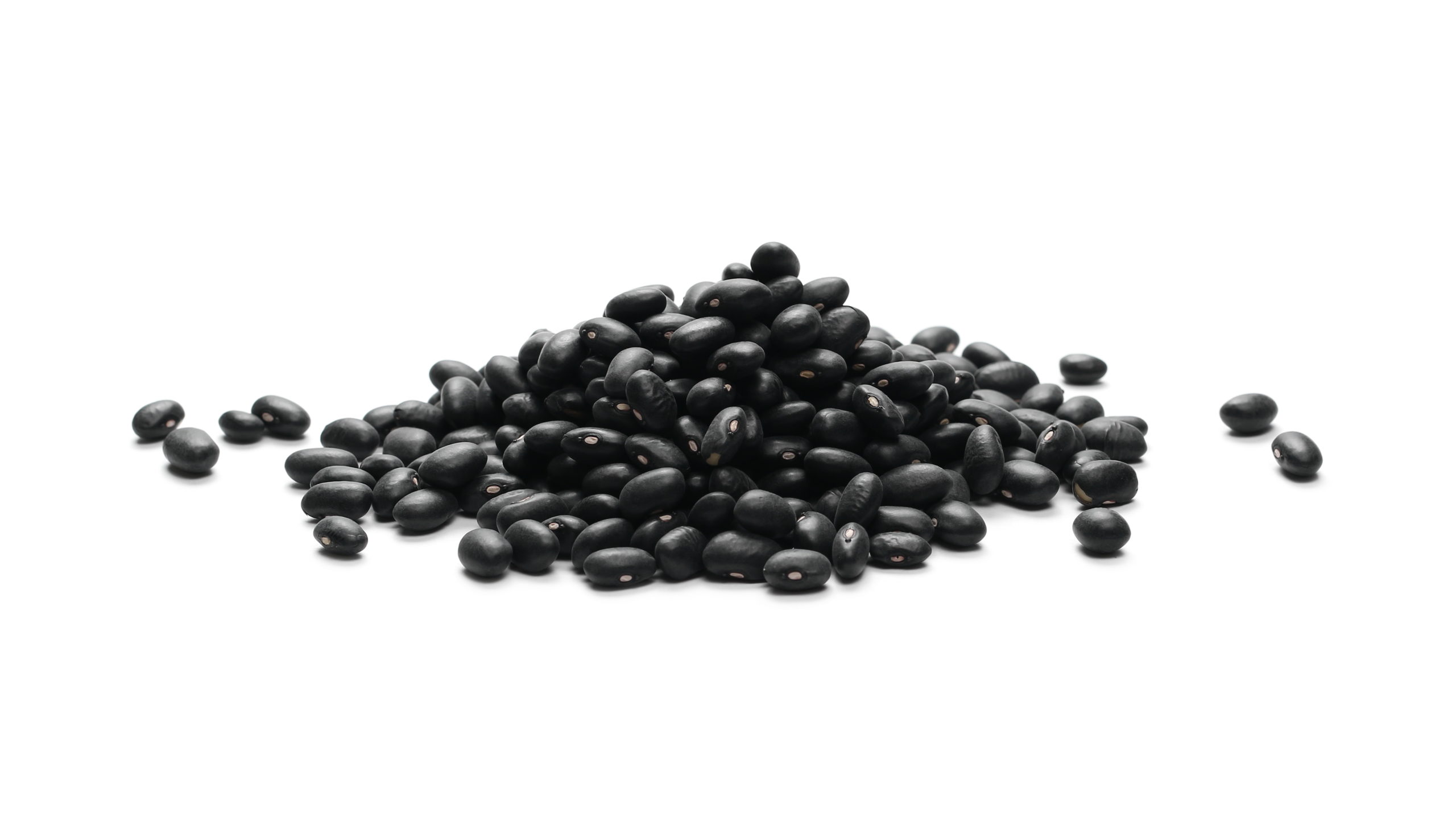
1. Black Valentine (1 Pound)
The Black Valentine heirloom bush variety is an older bean, not introduced commercially until the turn of the century by Peter Henderson in 1897. Like some other bush beans, the Black Valentine is a great soup bean as well as superb as a fresh snap bean when picked early. A very hardy grower too, the dried beans are jet black. They then turn a bit purple when cooked. It’s a tender and tasty bean that has a slightly nutty flavor and a nice “meaty” texture. They have a light, thin skin that allows its flavors to mix with your aromatics and create a delicious bean broth. Because they are a thin-skinned bean, the Black Valentines work nicely with rice. Juice from the bean flavors the rice. Black Valentines never turn mushy either. Black beans contain a wide variety of flavonoids that help control fat metabolism, bio-available magnesium to aid with protein synthesis and the rare-earth molybdenum which helps cells produce energy.
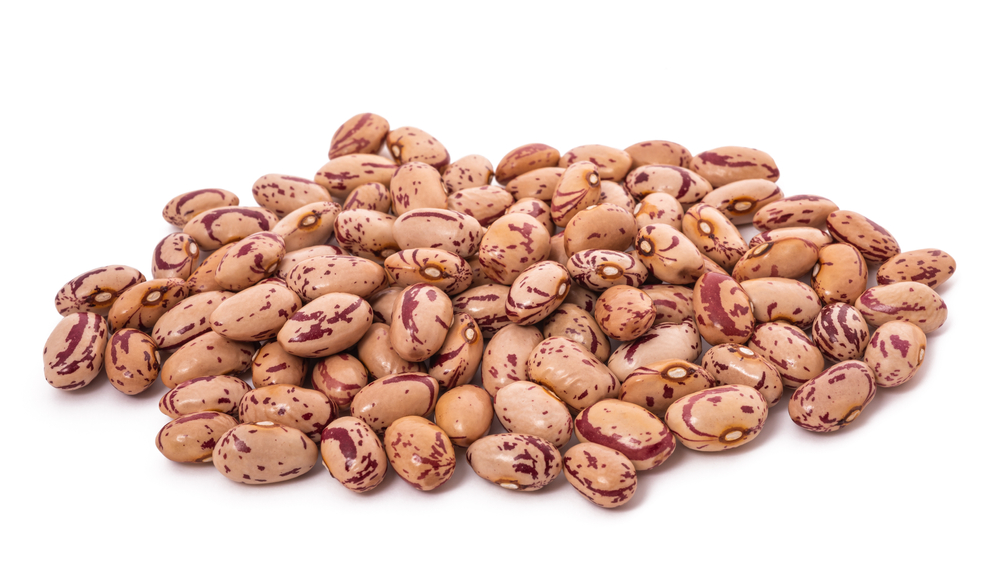
2. Cranberry "Borlotti" Bean (1 Pound)
Cranberry beans have a long and very rich history. Both in terms of growing and cooking. Long thought to have originated from South America thousands of years ago. Grown by indigenous peoples as a protein source and appreciated as a disease resistant variety. These heirloom beans were then “discovered” by Portuguese traders and moved throughout much of the known world. My wife’s grandfather’s family brought these beautiful cranberry beans West when they came from Vermont to Illinois in the early 1830s. This near the end of Blackhawk’s hegemony in these parts. The Italians have always placed a premium on these beans, hence their name borlotti. The French have also used these soup beans extensively in various dishes with a lot of rich sauces.
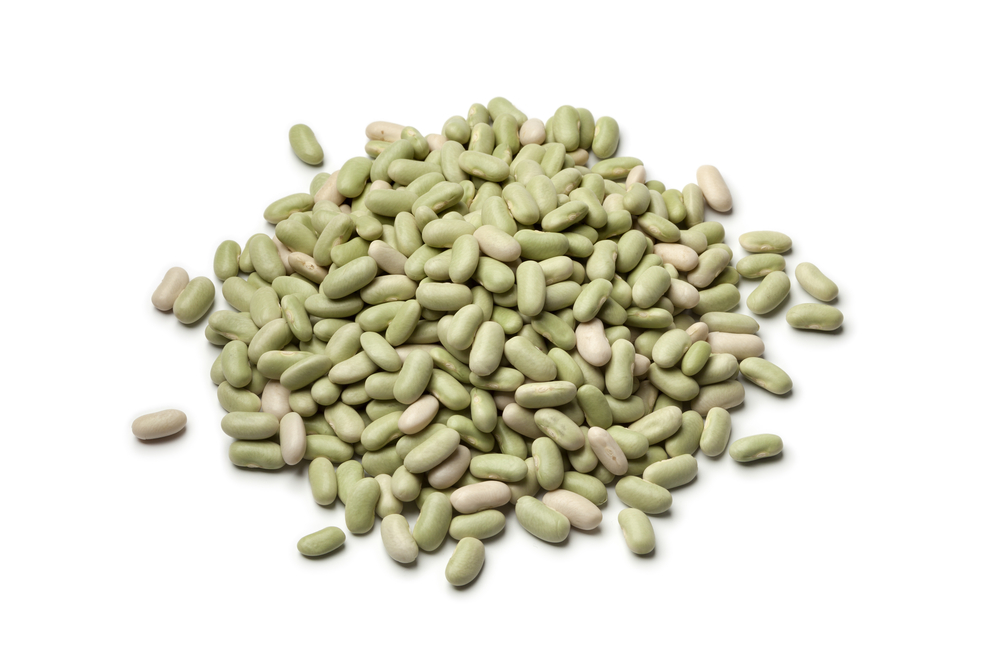
3. Green Flageolet (1 Pound)
Any gourmand worthy of his or her apron has nothing but praise for the Green Flageolet. Foodies everywhere regard this little-known heirloom bean as the “caviar of beans.” It’s a real delicacy, and usually very hard to find. Unless you frequent gourmet food stores and comb through specialty cooking catalogs, you’ve probably never seen them for sale. Their delicate, creamy flavor belies their hardiness – they won’t fall apart in the cooking process! Use them in soups and stews, but make sure to try them in cold salads, too. The Green Flageolet has the odd ability to retain chlorophyll longer than any other bean, even after cooking, hence the name. This bean has a lot of nutrients, like copper, iron, magnesium, potassium and B9 just to name a few.

4. Canario "Mayocoba" Bean (1 Pound)
This gorgeous yellow bean is said to have been originally grown in Peru. Archaeologists discovered the original “yellow beans” in a cave in the Peruvian Andes. They then dated the beans to a time before the Incas. The bean’s present name comes from a town in Mexico which is in the fertile Rio Fuerte valley. Today these beans are grown in Mexico as well as California. Mayocobas are also very popular in Belize where I live part time. Chefs in Mexico and Belize use Mayocoba beans to create refried bean dishes that are ultra-creamy. The bean’s flavor is buttery and because it has a relatively thin skin, Mayocobas tend to absorb and hold surrounding flavors well. Healthy too, high in protein and fiber.
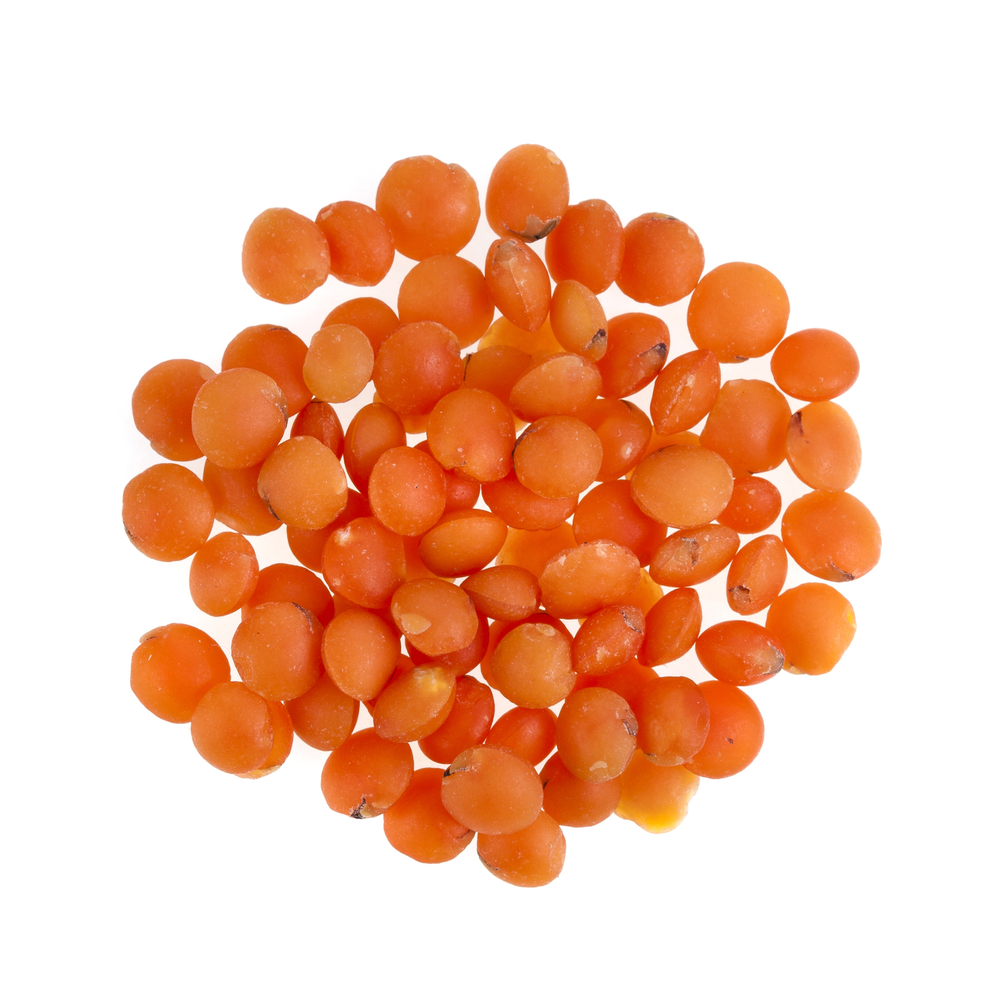
5. Jacob's Red Lentils (1 Pound)
The story of Esau and Jacob is well known throughout the world:
“Once when Jacob was cooking some stew, Esau came in from the open country, famished. He said to Jacob, “Quick, let me have some of that red stew! I’m famished!” That is why he was also called Edom. Jacob replied, “First sell me your birth right.” “Look, I am about to die,” Esau said. “What good is the birth right to me?” But Jacob said, “Swear to me first.” So he swore an oath to him, selling his birth right to Jacob. Then Jacob gave Esau some bread and some lentil stew. He ate and drank, and then got up and left.
Jacob’s “red lentils” are packed with healthy polyphenols which might even reduce some heart risks. Further, red lentils can also slow sugar digestion, which ultimately reduces blood glucose levels making red lentils a nice option for diabetics.
Jacobs’s Red Lentils have a sweet taste and do not need to be soaked like beans which means they can be prepared in minutes. Red lentils are the absolute fastest lentil variety to cook and serve.
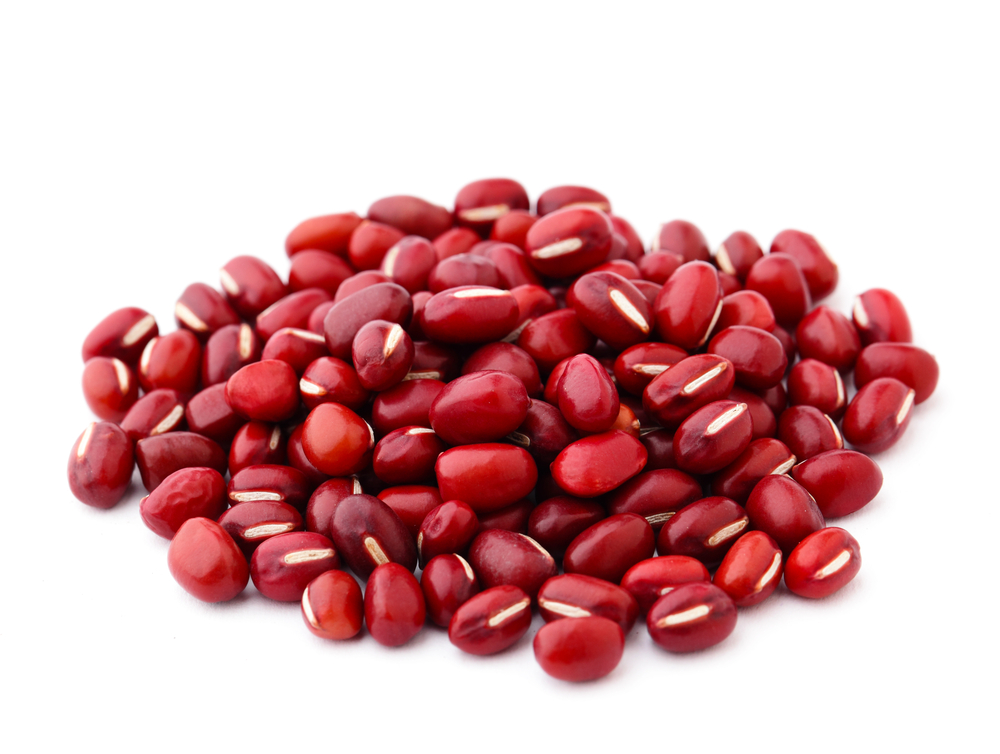
6. Red Adzuki (1 Pound)
Looks like an ordinary red bean… but it’s definitely not! The amazing red adzuki bean is indeed ancient and was first domesticated in the rich, fertile valleys below the Himalayas. It has been enjoyed in the orient for thousands of years including China and Korea. Adzuki beans are also incredible popularity in Japan and only the soy bean is eaten more there. Adzuki beans are a great source of zinc, calcium, fiber and essential fatty acids as well as polyphenols and phytochemicals. There are even studies showing an extract from this extraordinary bean may delay the progression of Alzheimer’s disease. Other studies demonstrate the inflammatory and anti-diabetic properties of adzuki beans. The favour is distinctly sweet and nutty making this bean extremely versatile. Texture can be controlled by cooking times and temperatures. Flavor can be amplified with garlic, onions and other aromatics.

7. Christmas Limas (1 pound)
Christmas Limas were brought to this country around 1840 from Peru. They are sometimes called “calicos” and are a variety of the traditional Lima except they are bigger and really don’t taste like traditional Lima Beans. They have beautiful patterns and release a more buttery and nutty flavor than an ordinary Lima Bean. The texture is also different, described by many as chestnut. (In fact, they are called Chestnut Limas by some.) You could say the Christmas Lima has all the rich protein and complex carbohydrate properties of regular nutritionally-rich Limas, but with a rich… even luxurious taste that makes this bean a delight… even for those folks who think they hate Lima beans. Christmas Limas also hold their original colors well after cooking which always makes presentation fun. This Christmas, make a hearty stew with these gorgeous beans and you’ll change the way folks in your family think about Limas forever. Truth is, you’ll put the “lima nay-sayers” in a very merry mood indeed! Lots of uses for this nutritious bean.
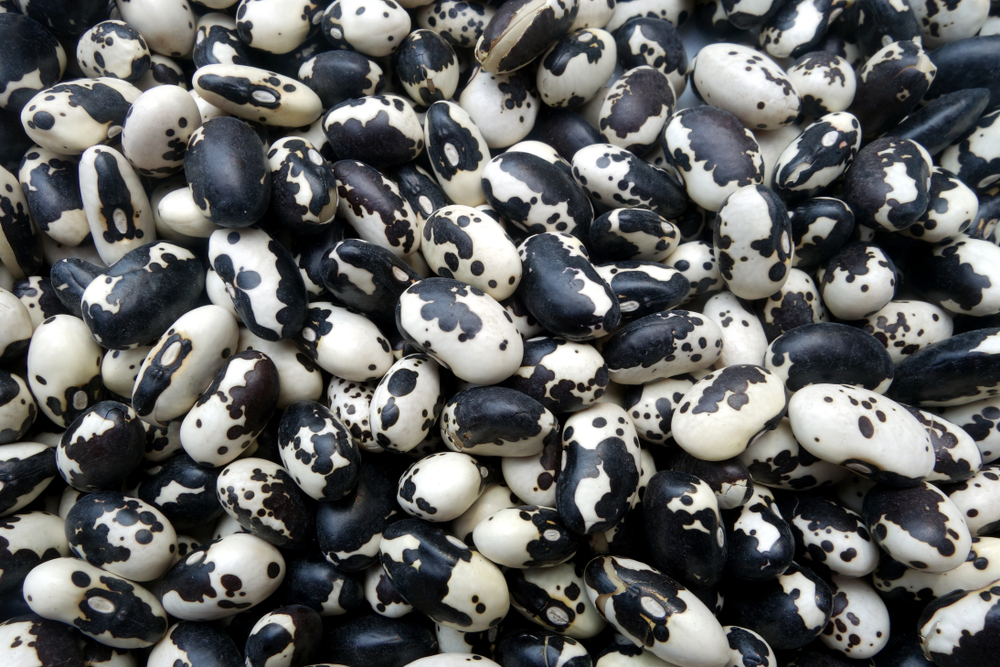
8. Orca (1 Pound)
Any bean named after a killer whale sure better have a killer taste. Orcas fit that bill as a rich, creamy tasting bean with a smooth texture as well as an extraordinary nutritional profile.
Heirloom Orcas are actually a type of kidney bean but with contrasting, “can’t-miss” black and white colors that resemble those of a killer whale. Even better, Orcas hold their color well after cooking, making them a great choice for casseroles, chili and chili related sides. Orcas double in size as a result of cooking and keep their visually stunning appearance. Heirloom Orca beans are also a great source of antioxidants and bio-available minerals. Warning: while they may be colored like the famous killer whales… they actually look more like small ponies. Heirloom Orca beans have a Caribbean origin and have been traced back as far as 400 years.
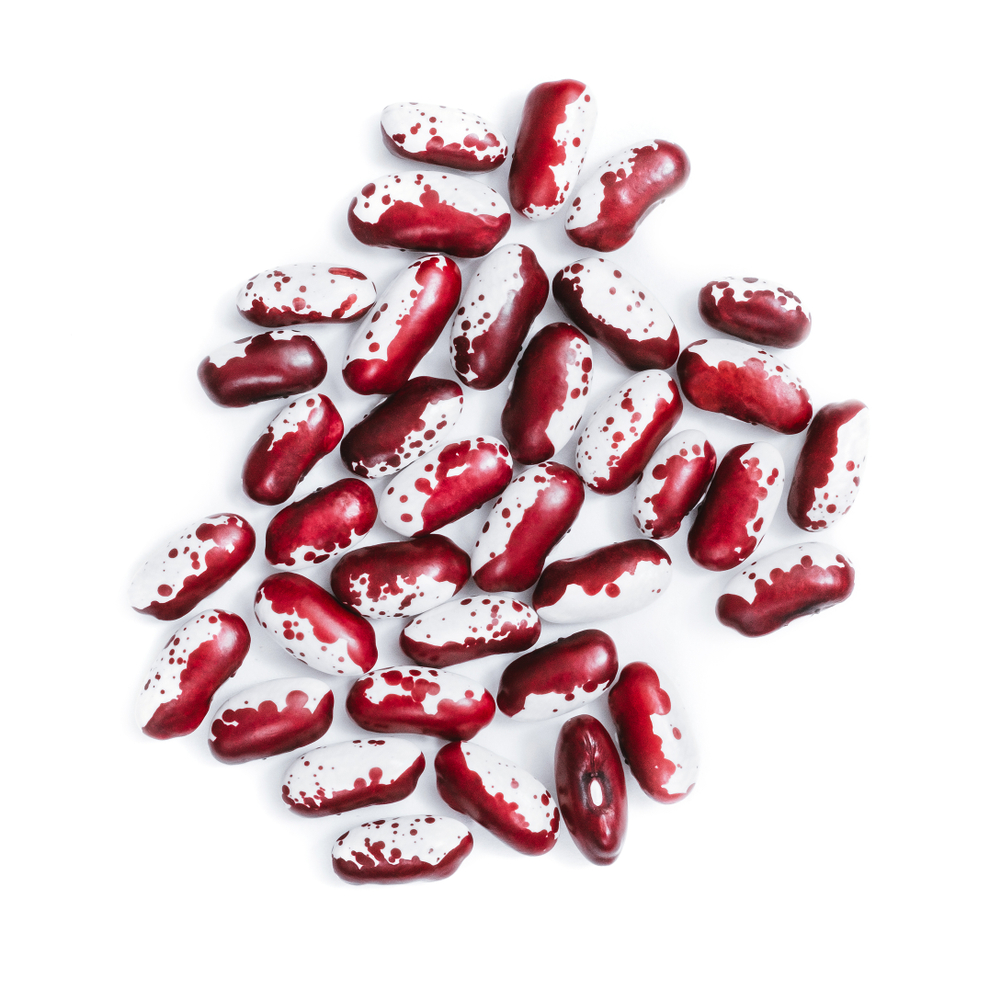

9. Aztec Cave Beans (1 Pound)
It is said that an Archaeologist in the 50s found a clay vessel with several of these mysterious beans which were estimated to be 750 years old… and got them to sprout! Cliff dwelling Indians later named the bean Anasazi which means “the ancient ones” in Navajo. This dazzling and speckled “burgundy bean” is highly prized not just in the in the desert Southwest, but in all of Latin America. They do turn slightly pinkish when cooked and are the bean of choice for hearty stews. Interestingly, these ancient heirlooms take only two-thirds the time to cook and have much less gas-causing properties than most beans. Full of bio-available potassium and folate as well as protein and fiber, the Aztec Cave bean is also one of the best tasting beans on the planet. Some say they look like Jacobs Cattle heirlooms, but make no mistake, these are not Jacobs Cattle heirloom beans. They may look similar, but are half the size of Jacobs Cattle beans. Additionally, Jacobs Cattle are a bush variety and Aztec Cave beans are a pole bean.
10. “Butter” Cannellini (1 Pound)
These butter flavored cannellini beans have a very distinct taste even though they look like a kidney bean with respect to shape. Seriously, these white beans look boring on the surface but are guaranteed to make your taste buds smile! They cook up with a very real, nutty, buttery flavor and a nice tender texture. Butter Cannellini beans are said to be originally from South America but this particular “butter” variety comes from Italy where they are used extensively in Minestrones. They are often used in stews and salads because they retain their texture and shape. Butter Cannellini’s look pretty and plump after preparation, making them a chef’s “go to” bean. The high fiber and beneficial protein content of these beans may help support digestion, muscle mass and even body weight.
*Important for 2025: We are in a very real "premium heirloom bean" shortage this year. This means we may have to substitute varieties if supplies of a particular bean become exhausted. If substitutions are made, all Soup Bean Survival Kits will contain the same amount of heirloom soup beans. (One pound per variety and ten pounds total.)
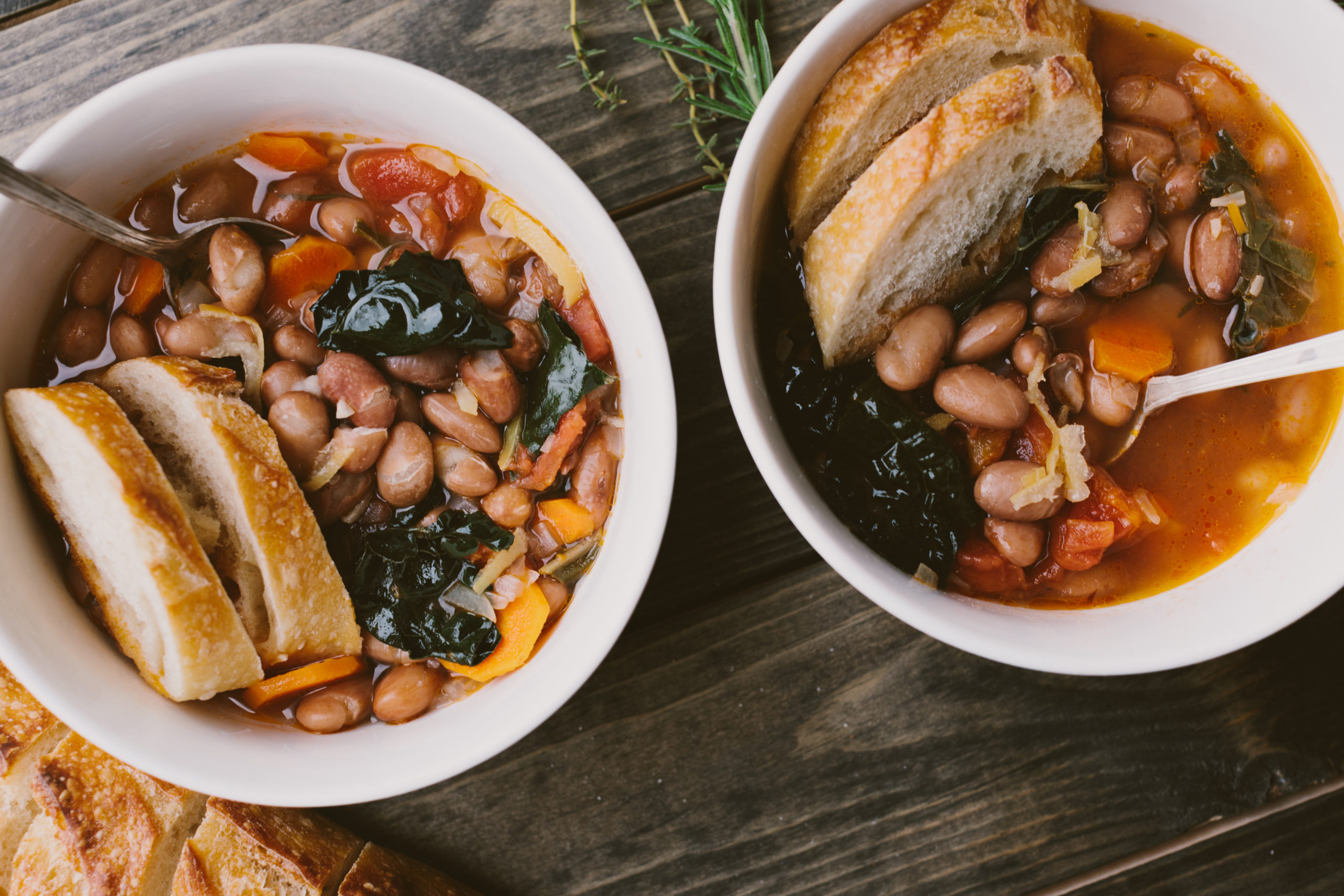
Easy To Make And Extremely Delicious Heirloom Bean Stew
The Healthiest "Survival Food"
You'll Ever Eat!
Did you know that even the U.S. Department of Agriculture and the U.S. Department of Health & Human Services recommend that all Americans eat at least 3 cups of beans per week? Here’s why:
- No other single food on earth has the same powerful combination of protein and fiber. In fact, just one serving of beans provides on average a third of the recommended daily intake of fiber.
- Beans are a great source of many of the bio-available minerals that most of us simply don’t get enough of. They’re an excellent source of bio-available copper and phosphorus, and a good source of manganese and magnesium. They’re a rich source of iron, too.
- Beans are packed with essential B Vitamins! They’re an excellent source of the essential B vitamins thiamine and folic acid, and a good source of riboflavin and B6.
- Beans are naturally free of cholesterol… and high in powerful antioxidants.
Beans of Distinction
Red Calypso beans are believed to be one of the beans grown by the Native American tribe, the Abenaki people of the Champlain region. The beans were commonly grown along with corn and squash in a process known as “the three sisters” where the crops all provide natural support for one another. Additionally when all three crops were consumed they together formed a complete protein as well as made for a filling meal which provided sustenance in a time where meat was scarce. The Abenaki would plant the Red Calypso and the other sister crops when the seven sister star cluster known as the Pleiades was spotted in the early morning sky along with the rising sun, a sighting that signaled the start of spring. Come winter the star configuration would be in the setting sun sky, signaling the end of the season for those crops.
Top Restaurants Charge Up To $250 For A Mere Handful Of These Rare Beans... But You Can Now Add Them To Your Survival Stash For Pennies On The Dollar!
Let’s face it, when you cook beans, you want to be sure your family will not just eat them, but will actually enjoy them. In a survival situation, this is even more critical. So why not make sure you have beans they’ll love?
If you’re interested in cheap, four year old… 89¢ beans from a big box grocery store, these are not the beans for you. But if you’re looking for the absolute freshest… most delicious, most nutrient-dense, most versatile survival foods you could possibly find, then you want the new package we’ve created called Soup Bean Survival. And you’ll be in great company, by the way. Check this out…
The French Laundry in California’s Napa Valley is one of the most exclusive restaurants in the world. The executive chef of this 5-star restaurant is a big fan of heirloom beans. He uses them all the time in his signature dishes. Dinner for two at The French Laundry, by the way, goes for over $500 (and that’s not including the wine).
It’s a similar story with the highly praised CityZen restaurant in Washington, D.C. Heirloom beans are a favorite ingredient for the executive chef there as well. Dinner with heirloom beans for two at CityZen will set you back about $250, plus the tip, of course. And it’s not just these two restaurants. Top chefs all over the country are putting heirloom beans on the menu, driving up demand… and scooping up the limited supply of the really top shelf beans.

Top Chefs around the country love heirloom beans. Which is why many of the nation’s best restaurants now have premium heirlooms on the menu. Whether it’s whipped, brothy or cooked to a variety of textures, heirloom beans are available but pricy.
Heirloom beans have been showing up on the menu of exclusive restaurants all across the country… but you won’t have to wait for a table or pay hundreds of dollars a head when you have your own supply of these rare heirloom beans.
$500 for beans for two? Whoa! But don’t worry, you won’t pay anywhere near that for your heirloom beans. We worked every connection and pulled every string we had to get access to these high-end beans, and as a result, the Soup Bean Survival Kit is the single best buy anywhere for hand-picked, fresh heirloom beans grown from finest seed stock in the world.
And there’s simply no other survival food that’s so nutritious and delicious. When you order Soup Bean Survival, you get 10 different varieties of beans for a total of 10 pounds of highly sought after, hard-to-find heirloom beans. And it costs only $159.97 (plus shipping and handling).
Whether you cook them the day you get them, or store them for the troubling times ahead, no other survival food will ever taste as good. After all, what other five-star restaurant food can you put on the shelf for years, and still have it taste as good as the day you bought it?
Plus... Right Now...
You Also Get These Five Bonuses
Digital Video Bonus #1
"Soup Bean Basics"
Cooking "Survival Meals" With Heirloom Beans Online Course
The first bonus is a “for your eyes only” video we made in Hanne’s Kitchen… where Brian and Hanne reveal all the little tricks, tactics and techniques that Hanne uses to make survival meals with heirloom beans. It’s a special opportunity to look at the hands-on basics of little known, old world, self-reliance with beans. Hanne and Brian will show you how to instantly take beans from the box and turn them “in a pinch” into a great tasting meal the whole family will wolf down with a smile. There’s a few “bean cooking” videos out there, but nothing comes close to this. Great heirloom bean recipes included.

Hanne and Brian teach you the basics of preparing survival meals with heirloom soup beans. You'll learn how to maximize heirloom bean nutrition and taste and do it in minimum time.
It's worth at least thirty bucks and probably more.
Digital Video Bonus #2
"Soup Bean Magic"
Gourmet Cooking With Heirloom Beans Online Course

Brian and Keith discuss how to use heirloom soup beans to easily create extraordinary meals that are packed with nutritional density. Learn how to cook heirloom beans in new and remarkable ways.
We also wanted you to be able to take your Soup Bean Survival Kit and create several exotic dishes anytime you wanted to... at a moment's notice. So here's what we've done: You probably know who Keith Snow is. Keith is, without a doubt, the single best "wild harvest" cook in the U.S. Period. He can take almost any food item from the garden or pantry and instantly whip up the most mouth-watering dishes you can imagine. You'll learn how to cook fresh heirloom beans and much more.
In fact, Keith has won his vast international fan base precisely because he has proven, over and over again that...
Gourmet Cooking With Heirloom Beans Is Easier Than You May Have Thought!
When you have his secrets, that is. Anyway, for years Keith has been teaching Wild Harvest-Heirloom Bean cooking and preparation techniques and we've finally convinced him to let us video what we're calling "Soup Bean Magic." Magic as in you're shocked something is so delicious and healthy comes from so little effort. And Keith makes it happen fast too.
Soup Bean Magic is like having Keith come over and stay with you for the afternoon, to teach you all his best heirloom bean cooking secrets and heirloom bean recipes. (A pretty amazing image considering Keith's always crazy, "booked solid" schedule.)
I don't know why we didn't ask Keith to do his "Soup Bean Magic" video before, but we've finally got it produced and we're finally releasing it. But only as part of the Soup Bean Survival Kit.
Soup Bean Magic is also worth an easy $30.00 if you could buy it. It comes with your Soup Bean Survival Kit.
Special E-Book Bonus #3
Cooking With Dried Beans
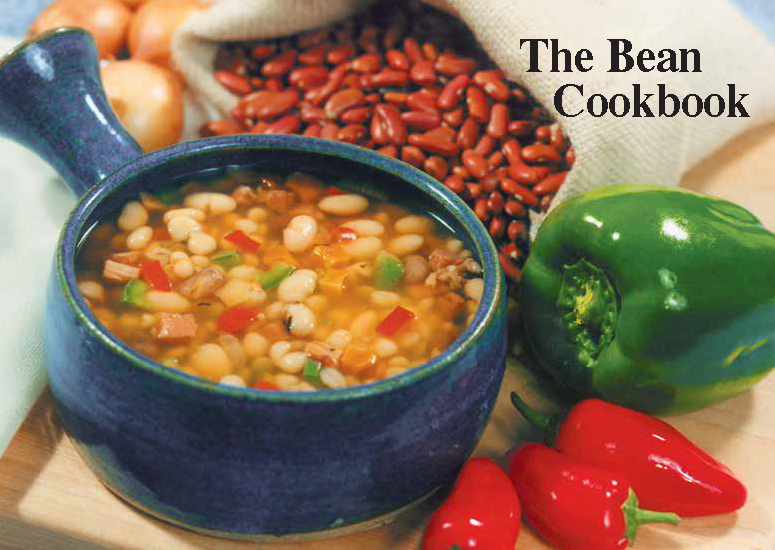
Saving Money And Eating Better With Dried Bean Basics
In this 190 page bonus E-book, the Northarvest Bean Growers Association explain in easy to understand language, how to fast and cook effectively with dried beans. As they say in the book... “cooking dried beans doesn’t take a lot of time, but it does take timing.” From a practical standpoint, making high-protein meals which add a nutrient rich array of minerals and vitamins as well as fiber to your diet all while saving money on your grocery bill, just makes good sense. The instructions in the book are designed to help you master the use of dried beans in cooking quickly and easily. Also has some interesting stuff on the history of beans and plenty of easy to use heirloom bean recipes.
Special Audio Podcast Bonus # 4
"Heirloom Beans As Backup"

Why Heirloom Beans Are The Perfect
Survival Food Backup
We also have an important "bean interview" with Sara Pitzer, the author of "Cooking with Dried Beans." In the interview we cover all aspects of cooking with dried beans as I picked Sara's brain for every jot and tittle of accumulated wisdom and experience in using dried beans. We talk about why beans make the perfect "back-up food" as well as how to use beans to save on your grocery bill. This is critical bean information that you absolutely want to know if you're interested in using beans as a survival food.
Special Bonus # 5
1 Free Pound Of Our Heirloom Soup Bean Mix
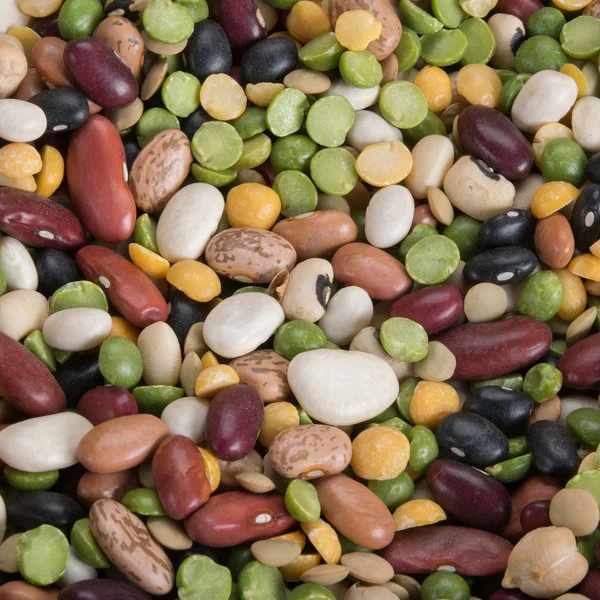
Perfect for enhancing any menu. Keep this mix stocked in your pantry as a soup staple. Experiment with various spices or delicious additions such as vegetables, poultry, or beef. Every spoonful for your family will be bursting with the diverse flavors of each bean.
Rich in protein and fiber, this bean mix is a fantastic, low-calorie, low-fat option for a health-conscious family. The beans are low-sodium, cholesterol free, and packaged with no additives or preservatives, ensuring a fresh flavor and homegrown taste. Use these beans to expand your "survival food menu" and create fast, nutritious meals!
Order Your
"Soup Bean Survival"
Kit Today!

More and more people are discovering the tremendous taste of heirloom beans, and supplies are going fast. Here's what to do right now: Lock in your supply of Soup Bean Survival. Only one farm in the entire country grows the beans for this special combination package, and once the most recent harvest is sold out, it will be months (next harvest) until more become available.
If you're already a bean lover... the Soup Bean Survival Kit will take your enjoyment to a whole new level. If you were indifferent to beans before, you'll be glad you gave these a try. And if you've never eaten beans before, why not start with the very best?
For the absolute fastest service, click the "add to cart" button below.
Bon appetit,
Bill Heid, President
Powerful Living
P.S. Sometimes folks ask us how long you can store soup beans. Dried heirloom soup beans can be stored for up to 25 years if stored properly (kept cool and carefully sealed). That said, there are many variables that can affect ideal storage conditions.
P.P.S. Please know that it's becoming very difficult to keep these and other heirloom beans in stock right now. Just a heads-up... bean growers tell us that premium bean inventories will be tight for the remainder of 2025. Be advised. Thanks!
Buy Yours Today!
Retail Price $159.97
Today Just $99.97
Plus $19.95 Shipping & Handling
(In Stock - Ships In A Few Days - Sometimes Sooner)
Form Will Download Into A New Window For Your Convenience

Order Online By Safe Secure Server

